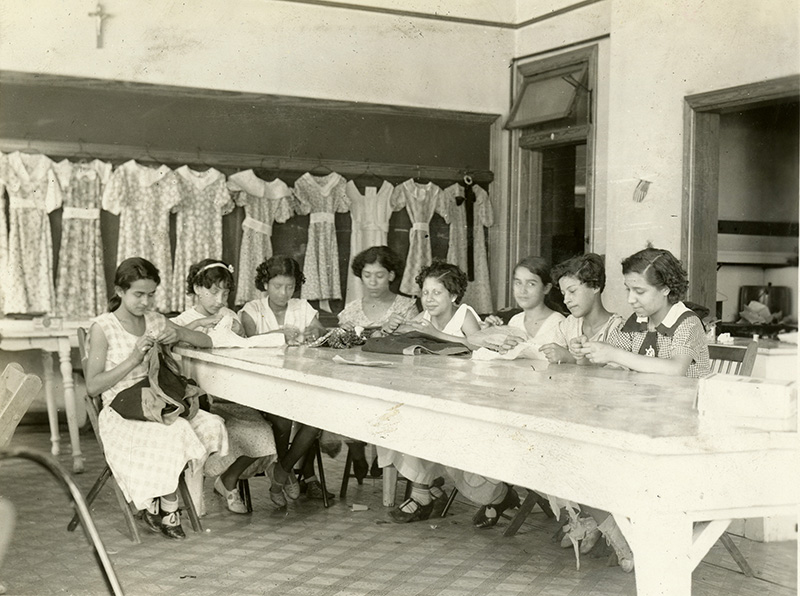The Guadalupe Center
During the Mexican Revolution of 1910, thousands of Mexicans left their homeland in pursuit of a better life in the United States. Many who traveled north to Kansas City found work in packing houses and factories and settled in the Westside neighborhood.
However, Mexican immigrants experienced discrimination, poverty, and lack of social services. In response, a settlement house was established in 1919 by a Catholic women's club, the Agnes Ward Amberg Club, to serve the Westside's predominately Hispanic population. Named after the patron saint of Mexico, the Guadalupe Center provided health care, schooling, and other services to the community's impoverished families.
The center was first located in the rectory of Our Lady of Guadalupe, the only church during this time period that was presided over by a Spanish speaking priest, Father Jose Munoz. The center stayed in this location until 1936 when it moved to 1015 W. 23rd Street (now 1015 Avenida Cesar E. Chavez).

From 1926-1944, under the leadership of Dorothy Gallagher (the "Godmother of Guadalupe"), the Center moved into a new building and expanded its services to include English classes, boys' and girls' clubs, adult education classes and home economics. Translators were employed to help neighborhood residents gain admittance to the General Hospital, apply for jobs, and understand the American legal system.
As the minority community expanded, Gallagher's family donated land for the Guadalupe School and later, land for a Spanish-style settlement house at 23rd and Jarboe. Gallagher drew the first plans, hired an architect, and paid for the building, which opened in 1936.
The Missouri Valley Special Collections at the Kansas City Public Library holds the Guadalupe Center Collection, which consists of scrapbooks, photographs, and correspondence. You can find many photos and materials by searching KC History for "Guadalupe Center".
The life and sense of community for these immigrants are evident from the images and text that can be found in the collection. Their cultural, social, and religious life is documented, and it is evident that the Guadalupe Center was the center of much of their activities and an important community gathering place.

